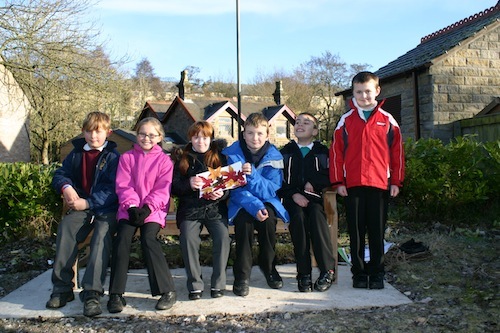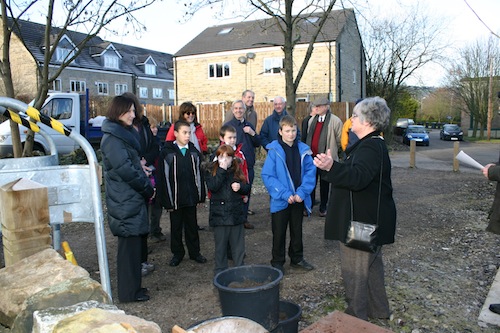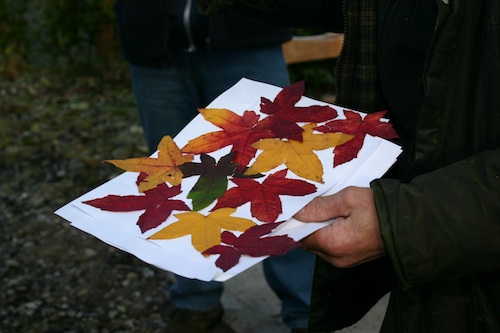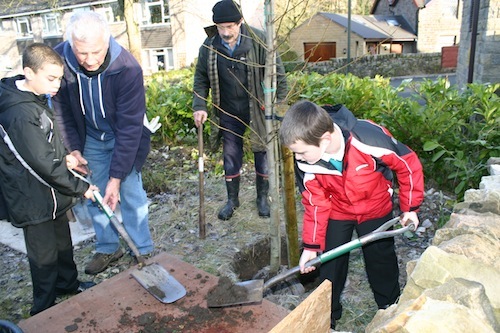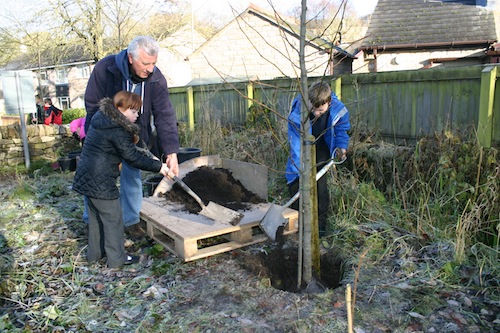As the ‘planting season’ arrived, Whaley Bridge created its permanent commemoration of the Queen’s Diamond Jubilee. Three trees were planted by primary school pupils near the start of the ‘greenway’, more formally known as the Shallcross Incline, and itself opened during this exceptional year.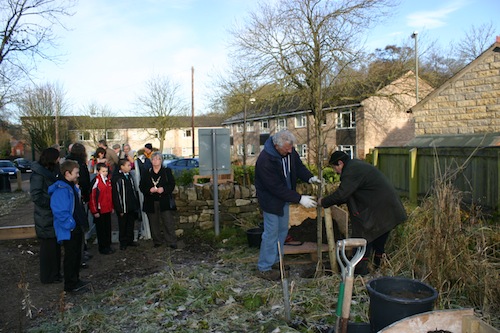
- Sweetgum No 1 is moved into place, ready for youngsters to fill in with soil
The three Worplesdon Sweetgums (Latin name Liquidambar Styraciflua) are deciduous trees, originally from North America. They have maple-like leaves, more like a Japanese maple than the North American native they have been developed from. The leaves are large, shiny and an ‘elegant green’ in spring and summer, becoming brilliant red, orange, yellow and purple in autumn.
The Worplesdon Sweetgum has a great advantage over other sweetgums – it does not carry the sticky ‘gumball’, containing many seeds, which can litter the ground. Worplesdon is a place in Surrey, where a country estate developed a new, miniaturised version of the gum tree. It can grow to 12-15 metres, but David Ross of the Kettleshulme garden centre – who has one in his own garden – feels it will remain smaller in a northern climate.
The idea of planting trees came from Whaley4wards, an organisation set up to produce good ideas to improve Whaley Bridge. Anne Winter, Chair of Whaley Bridge Town Council, welcomed two children from Furness Vale, Taxal and Fernilee, and Whaley Bridge primary schools. She told them they could watch over the years how ‘their’ trees develop.
David Ross told the children that the sticky gum from the original American trees was used to create chewing gum. He produced a large sheet of paper with the different brilliant covered leaves taken from his own gum tree in the autumn.
Then, the children carefully lifted soil into the prepared positions, and gave three cheers for three trees to Her Majesty. Residents living near the start of the greenway are going to have a treat next year – especially in autumn – when the Jubilee trees are in leaf.
This particular variety was chosen to provide colour to the area without restricting views or blocking out light.

